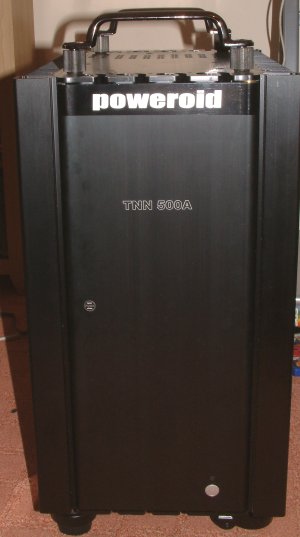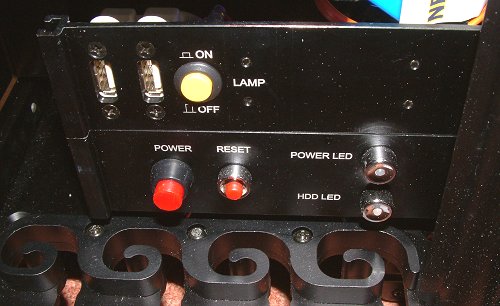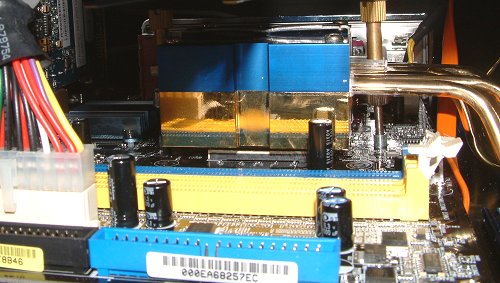The front
Most vendors place the emphasis, quite rightly in most cases, on the components of a PC. 3.4GHz Pentium 4, 250GB SATA hard drive, and 256MB Radeon 9800 XT are bigger selling features than, say, a tool-less case. CoolerMaster and Lian Li have challenged that perception with sexy aluminium offerings, but cases are thought of as necessary but unexciting housings, nothing more, nothing less.Zalman, however, has seen considerable merit in using a case as part of the overall cooling solution. Voluminous amounts of aluminium or steel make for a heatsink in themselves, so Zalman's applied this concept in its TNN 500A range. Some clever internal heatpipe usage and a custom PSU gives rise to the possibility of fanless, powerful PCs.

This industrial-looking massive hunk of steel is where the magic is worked. It's not much larger than a regular case; you can see it next to a CoolerMaster WaveMaster, here, yet when housing a complete system it weighs in at over 20kg. There's good reason to have two steel handles bolted to the top section. The unwieldy nature is also expressed in the need to have four wheels to provide basic maneuverability. It's the kind of PC you place once and forget about it. A look at the top is testament to its industrial, rough nature. A side shot shows the finned sides that aid overall cooling.

Having a look inside is as easy as pushing the front door. This disengages the lock, and the door pops out. The TNN 500A may be a masterclass in cooling-orientated engineering, but it leaves something to be desired in terms of internal style.

Looking lower down the front chassis highlights a couple of USB2.0 ports, a switch that toggles some funky blue light on and off, and the more traditional power and reset buttons. Notice how cables can be routed through the four notches at the bottom. There's an identical arrangement on the back, because it's not the best-looking PC with the front door ajar.

Taking a closer look at just how the cooling works. Here's the CPU block with a couple of heatpipes leading off towards the case. Warm heat from the CPU is absorbed by the vapour contained inside the pipes. Vapour then rises and turns to liquid as it cools. Heat that's carried via the vapour/liquid is then transferred externally via the case. You need a hell of a lot of external cooling area, so Zalman's case, with its ribbed design, is designed well. Just a note here. By designing the internals to maximise cooling, Zalman's made it extremely difficult and irritating to build into. Even replacing RAM modules becomes a chore in itself. As mentioned above, it's a build-and-forget kind of setup.

Here's a lower shot showing similar heatpipes emanating from the graphics card, which in this case is a Radeon 9800 Pro. Notice how the pipes connect to the inside of the case. There's numerous blocks situated in and around the TNN 500A. We must note that the external chassis barely got warm to the touch when exposed to prolonged load. It works as a very subtle radiator. In that case, cooling is heavily dependant on ambient temperature. We can see the TNN 500A working well in winter but struggling in summer, where ambient temperatures can often exceed 25c.









